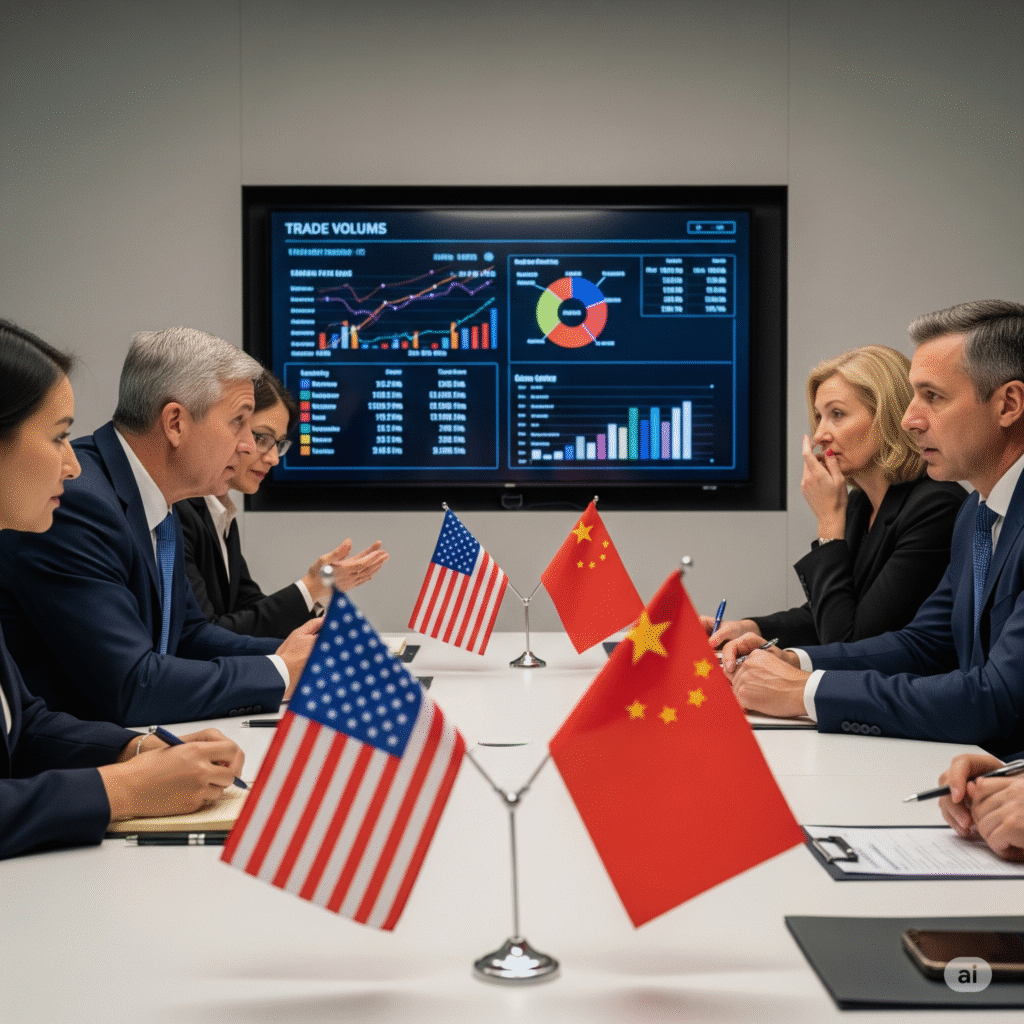Tensions between the United States and China have reignited after President Donald Trump accused Beijing of breaching a recently established tariff agreement. The accusations come just weeks after both nations agreed to ease trade restrictions during high-level negotiations in Geneva.

Trump Claims China Violated the Deal
President Trump alleged that China has “totally violated” the tariff truce, although he did not specify how. U.S. Trade Representative Jamieson Greer later elaborated, stating that while China had formally lowered some tariffs, it failed to remove certain non-tariff barriers that were also part of the agreement.
Greer pointed to measures like blacklisting U.S. firms and limiting exports of rare earth magnets—crucial components in the production of automobiles, aircraft, and electronic chips—as examples of China not fully honoring the deal.
“The U.S. did its part,” Greer stated, “but China is dragging its feet, and that’s not acceptable.”
Beijing Pushes Back
China’s response came swiftly but diplomatically. Rather than directly addressing Trump’s accusations, Chinese officials urged Washington to abandon what they described as “discriminatory restrictions.” A spokesperson for the Chinese Embassy in Washington highlighted concerns over U.S. export controls, especially in the semiconductor sector, where recent measures paused sales of chip technologies and related materials to China.
Despite the friction, Beijing maintained that communications between both governments have continued since the Geneva discussions.
A Fragile Trade Truce
The original deal, struck on May 11 in Geneva, included a significant rollback of tariffs: the U.S. dropped its tariffs on Chinese imports from 145% to 30%, while China lowered its own from 125% to 10%. The agreement also included a 90-day suspension on select tariffs as both sides explored further collaboration.
However, U.S. Treasury Secretary Scott Bessent warned this week that talks had lost momentum. “Given the complexity of these negotiations, it may require the direct involvement of both President Trump and President Xi to move things forward,” Bessent told Fox News.
Still, Bessent remained hopeful, hinting at possible talks or a call between the two leaders in the coming weeks.
Visa Revocations and Legal Setbacks
Adding to the rising tension, the Trump administration has moved to revoke visas of Chinese students studying in the U.S., affecting a significant number of individuals—estimated at around 280,000.
Meanwhile, Trump’s tariff strategy faced a legal hurdle as the U.S. Court of International Trade ruled he had exceeded his authority when imposing certain duties. However, an appeals court granted a temporary stay, allowing the tariffs to remain in effect for now.
Trump called the lower court ruling “horrific” and said he hoped the Supreme Court would overturn the decision “quickly and decisively.”
The Bigger Picture
Trump has long argued that tariffs are a tool to bring back American manufacturing, reduce dependency on foreign imports, and negotiate better trade deals. But analysts suggest that the ongoing uncertainty may discourage other countries from entering trade agreements with the U.S., especially if they fear sudden policy reversals or legal complications.
As trade talks with China falter, a Japanese delegation is also in Washington to continue negotiations. According to Bessent, some deals are close to completion, while others remain complex.
Whether the tariff standoff can be resolved peacefully—or if it will spiral into another economic battle—remains to be seen.